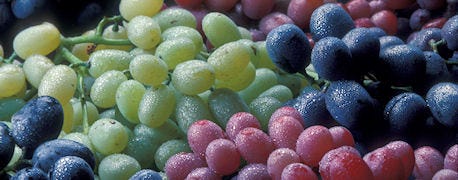April 15, 2014

With temperatures rising and ice and snow melting, Michigan's fruit farmers are finally able to start assessing winter damage in their orchards, fields and vineyards. Between heavy snows, hungry varmints and the bitter, unrelenting cold, many of the state's fruit trees, bushes and vines found the winter of 2013-14 as rough as the rest of us.
"There certainly is going to be some bud damage, and potential damage to the wood," says Ken Nye, horticulture and forestry specialist for Michigan Farm Bureau (MFB). "Apples probably weren't affected too much, but we'll see some damage to cherries, peaches, grapes and blueberries.

Winter Fruit Tree Damage Is Likely
"The best case scenario now is for us to stay cool as long as possible," Nye says. "The way we're set up right now is we might have the kind of spring we can get through without too much frost damage. That will vary by location, but it always does."
Snow & Ice
This winter's massive snowfall had its pros and cons. Deep snow cover is beneficial in that it helps insulate the ground and, come spring, replenishes both ground- and surface-water reserves in desperate need of recharging. But the weight of heavy snows is already known to have caused damage in some high-density apple orchards where growers are observing some breakage in lower branches.
Similarly, Lake Michigan's near-record ice cover was a mixed blessing. By limiting the lake's normal moderating effect, the iced-up big water meant more temperature extremes along the coast. On the plus side, the ice has helped ensure a slow warm-up as winter transitions into spring.
"The last thing anyone wants is the kind of haywire spring we had in 2012," Nye says. "Fruit growers will take a long, slow warm-up over sudden temperature shifts any time. Nobody wants another 2012—ever."
Tree Fruit
With most fruit trees just now beginning to emerge from dormancy, growers are reporting a variety of damage. Given the diversity of pest species, topography and micro-climates, problems are likely to be highly variable—severe in some areas and non-existent in others. As fruit trees bud over the course of the coming weeks, farmers will get a much better idea of just how severe the winter really was.
The extreme cold doubtless inflicted some winter injury on younger trees and more tender varieties of fruits, with low-lying areas being hit harder than uplands and sites in close proximity to Lake Michigan. Peaches, plums, apricots and sweet cherries are likely to have suffered more than hardier apples and pears.
Mice and rabbits are known to snack on tender fruit tree bark throughout harsh winters. Rabbits gnaw at the snowline, while mice and voles wreak havoc at the ground level, where the damage can't be assessed until all the snow's gone. Apple growers in some areas are reporting damage from deer, who have nibbled on buds where they could be reached.
Blueberries
Blueberries faced multiple threats rooted in the harshest Michigan winter in decades. Unlike their wild kin, commercial-scale blueberry cultivation exposes the bushes to harsh elements near the Lake Michigan shoreline. The plants' ability to routinely endure temperatures as low as -20 degrees Fahrenheit was put to the test over the past four months, but it's a man-made threat that has growers more concerned this spring.
County road commissions' mandate to keep winter roads free of ice and snow is at odds with blueberries. While they're hardy in the face of harsh elements, blueberry bushes are sensitive to soil chemistry—something copious amounts of road salt messes with every winter.
"Because the winter was so hard and so long, counties had to use more salt than normal," Nye says. "Road salt dries up the blueberries plant."
In Ottawa County, home of 6,000 acres of blueberries, the well-known problem led the county road commission to moderate its road-salt application over the past decade. Even so, field observers from Michigan State University Extension are estimating significant damage this year to bushes close to heavily-salted roadways, particularly US-31 and M-45. Again, the damage has yet to be fully assessed and could vary as much as 40% from one field to the next depending on local conditions.
Wine Grapes
Severe, prolonged low temperatures damaged wine grapes up and down the Lake Michigan coastline. Weather stations charted several nighttime lows below -10 degrees Fahrenheit, and at least one—March 3—that dipped to -20 degrees or colder. Weathering that kind of cold is a lot to ask of vines already stressed from a late 2013 harvest season that didn't allow vines much recovery time before winter dormancy.
Hardiness varies among the many different wine grape varieties. More delicate varieties like Pinot Blanc, Pinot Noir and Cabernet Franc may see bud losses of 50% or worse. Hardier varieties like Riesling and Chardonnay—the region's workhorse grapes—are more likely to shake off losses of 25% or less.
"Those are rough numbers, though—it's still too early to assess the damage accurately," says Nye. "Grape vines are complicated, with secondary and tertiary buds that can help compensate for damage to primary buds. We'll see some damage for sure, but it's too soon to hit the panic button.
"They're resilient," he adds. "Depending on what variety you're talking about, they could lose up to half their buds and still have a decent crop."
You May Also Like




